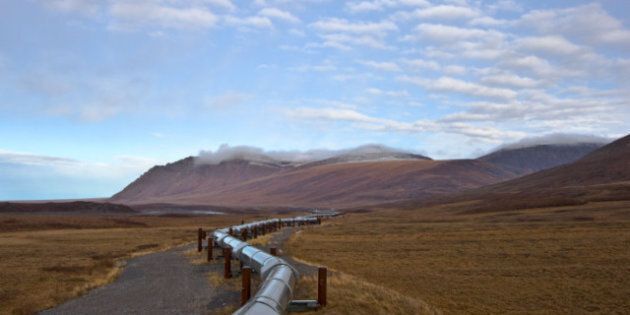
Have you noticed how difficult it is to build "shovel ready" public infrastructure these days?
The new bridge between Detroit and Windsor is caught up in local Michigan politics, not being built.
The Keystone XL pipeline is caught up in Nebraska politics and presidential politics, not being built.
Canadian projects to generate more hydroelectricity in Manitoba, Quebec, and Newfoundland to export to the United States offer the potential for greener power to replace coal-fired generation sound great. But powerlines to carry this energy beyond the border states are not being built.
Roads and railways are aging infrastructure too, and carry most North American trade. Historically, most of our highways and rail lines connect east and west. Our north-south capacity is catching up, but not enough is being built.
For many of these projects, the problem is not funding or engineering, but permitting. In the United States federal, state, county, and municipal governments have overlapping jurisdictions and infrastructure projects require approval from each government. Permits may be required for design, safety, environmental impact, zoning, construction, and more.
Add to this the necessary approvals of public funding, and infrastructure projects can take decades from conception to completion.
MSNBC host Rachel Maddow reminds us that it takes a great country to build a great project like the Hoover Dam. What does it say that the United States can no longer get big projects -- or even small ones -- underway?
One thing it says is that the United States takes its democracy seriously.
Public input and expert testimony on infrastructure projects, given before elected or citizen boards and committees, rarely produces consensus but often results in better decision making.
If the process needs changing, it shouldn't be changed to eliminate public input -- even if not-in-my-back-yard (NIMBY) types seem to oppose everything without regard for the greater good.
This is a serious problem for the North American political economy, pitting democratic politics against economic growth. If we don't build infrastructure in the United States, not only will the U.S. gradually lose competitiveness as logistics costs rise due to its overloaded infrastructure, but Canada and Mexico will each face difficulty getting products and services into the U.S. market, hurting their growth as well.
Trading partners in Asia and Europe, by contrast, will take advantage of the east-west infrastructure already in place as long as they can; they'll face constraints, too, but Canada and Mexico suffer sooner.
There might be a way to resolve this dilemma, using a model from our past: the International Joint Commission, or IJC.
Back in 1909, leaders in Canada and the United States faced a mounting pile of complaints, concerns and conflicts at their shared border, from water rights to land use. Too often, resolving these disputes to the satisfaction of the agitated local communities affected was impossible because of tensions between the United States and Great Britain, which had sovereign authority over Canada.
In response, the United States and Canada established the IJC, an apolitical panel made up of three individuals from each country, with a small staff. The IJC can act only when it is asked to by the State Department and Canada's Foreign Minister through a formal "reference" of a mutual problem to the body.
The IJC acts on the reference to study a problem, hold public hearings to gather opinions from experts and the general public in both countries, and eventually to prepare a technical report with recommendations to the two federal governments. The IJC does not have the authority to decide anything -- that authority remains with the sovereign governments. But by stepping away from partisan politics and immersing themselves in technical details, the IJC offers the governments sound advice on how to proceed.
The IJC is now more than 100 years old. It has successfully addressed a number of environmental problems associated with the Great Lakes and our shared environment.
So, why not take this model and establish a North American Infrastructure Planning Commission?
An equal number of representatives of the three federal governments could consider scientific and engineering evidence and select among various proposals for where to locate infrastructure, and what the environmental and public safety impact of the infrastructure might be. Simply by co-ordination data gathering (soil samples, maps, etc.) to support permitting decisions by governments, a continental infrastructure planning commission could expedite approval processes.
The answer to the economic infrastructure dilemma posed by so much U.S. democracy may be more democracy, and a new process that gives weight to expert advice and the views of Canadians and Mexicans, too.
Something must be done soon to allow a great country to build great projects again, and keep North America competitive with Asia and Europe.